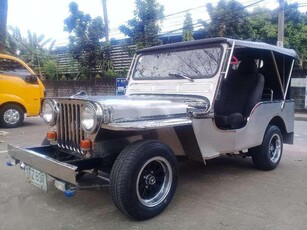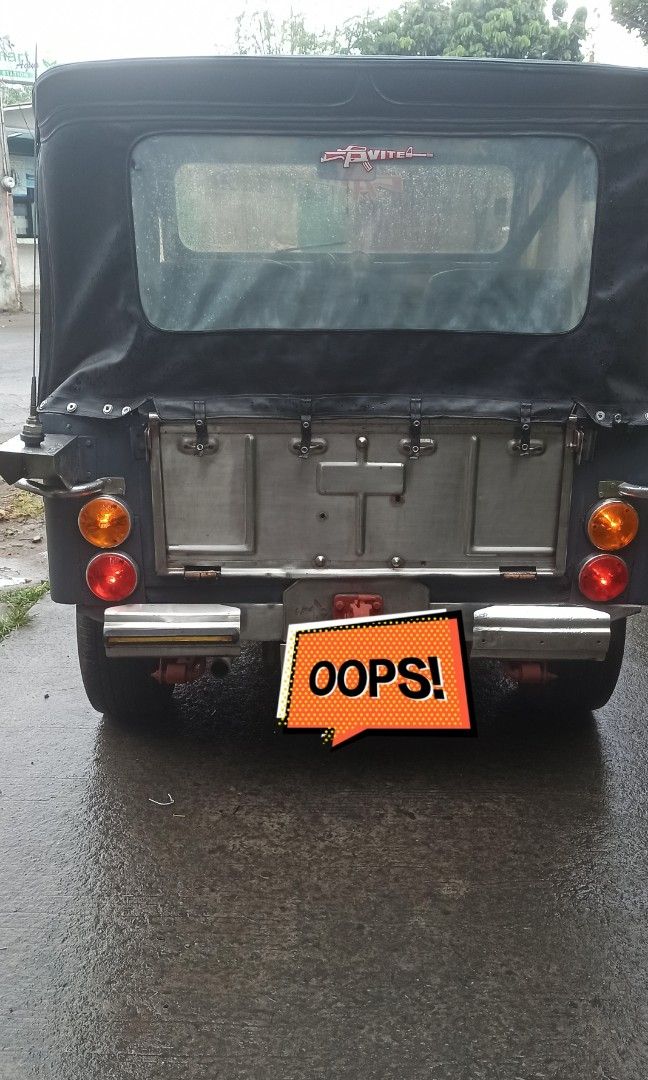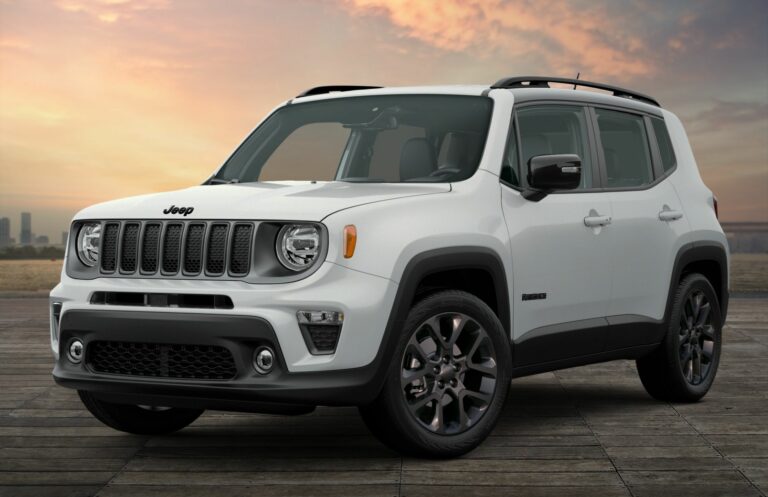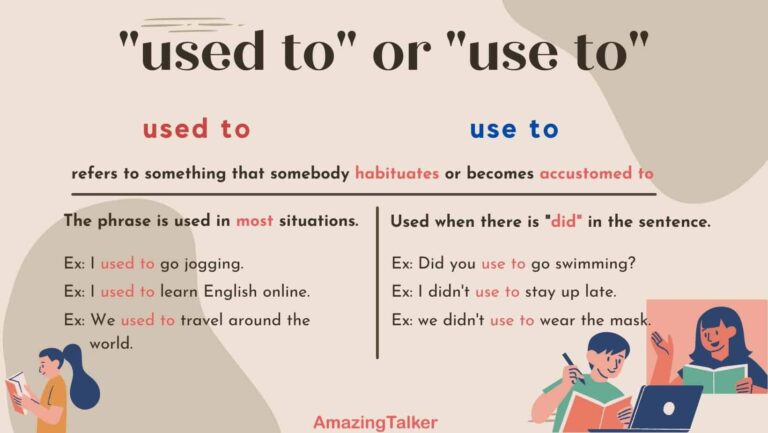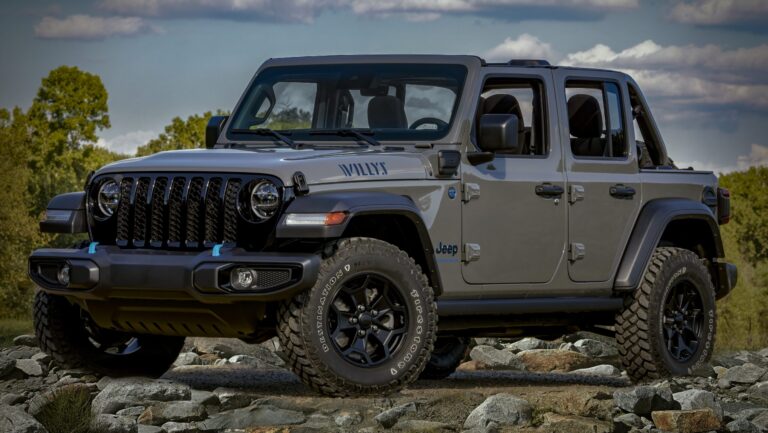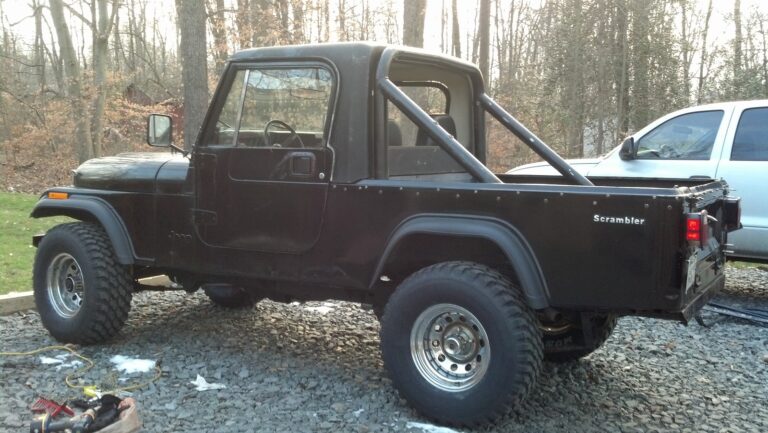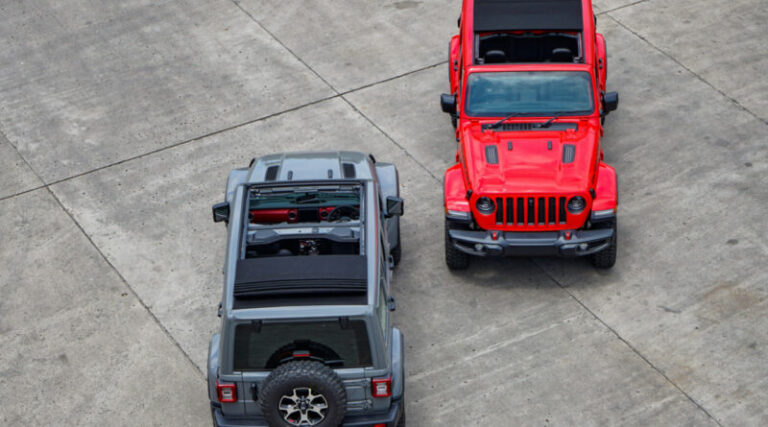FPJ Owner Type Jeep For Sale In Philippines: Your Ultimate Buyer’s Guide
FPJ Owner Type Jeep For Sale In Philippines: Your Ultimate Buyer’s Guide jeeps.truckstrend.com
The roads of the Philippines hum with a unique automotive symphony, and at its heart lies a vehicle that is more than just transport; it’s a cultural icon: the "Owner Type Jeep." While often confused with the ubiquitous public utility jeepney, the owner type jeep holds a distinct place, embodying rugged individualism, practical utility, and a deep connection to Filipino ingenuity. When we add the "FPJ" moniker to it, we evoke images of the legendary Fernando Poe Jr., the "King of Philippine Movies," whose on-screen persona often involved driving tough, no-nonsense jeeps across challenging landscapes. Thus, an "FPJ Owner Type Jeep" isn’t a brand, but a style – a robust, often custom-built, and distinctly Filipino vehicle that resonates with the spirit of durability and adventure.
This comprehensive guide is designed for anyone looking to navigate the exciting, yet sometimes complex, world of acquiring an FPJ Owner Type Jeep in the Philippines. From understanding what defines these unique machines to practical advice on inspection, purchase, and ownership, we’ll equip you with the knowledge to make an informed decision and find your perfect rugged companion.
FPJ Owner Type Jeep For Sale In Philippines: Your Ultimate Buyer’s Guide
What Defines an "FPJ Owner Type Jeep"?
The owner type jeep’s story begins in the aftermath of World War II, with the surplus of American military Jeeps (Willys MB and Ford GPW) left behind. Filipino resourcefulness transformed these war machines into civilian workhorses. Over time, as original parts became scarce, local mechanics and fabricators began to build jeeps from scratch, using locally available materials and a mix of surplus and new components. This gave birth to the "owner type" jeep – a vehicle often custom-built to the owner’s specifications, distinct from factory-produced models.
The "FPJ" association is purely cultural and stylistic. Fernando Poe Jr.’s films often featured him driving classic, robust jeeps – sometimes a vintage Willys, other times a modified owner type. These vehicles became synonymous with his character: tough, reliable, unassuming yet capable, and deeply rooted in the Philippine landscape. Therefore, an "FPJ Owner Type Jeep" typically refers to an owner type jeep that embodies this aesthetic: a classic, often open-top, rugged, and unpretentious vehicle, usually powered by a reliable diesel engine and built for durability rather than luxury.
Key characteristics include:
- Hand-Built Chassis: Often a custom-fabricated ladder frame, designed for strength.
- Diesel Engines: Most commonly repurposed from Japanese surplus vehicles (e.g., Isuzu 4BC1, Mitsubishi 4DR5, Toyota 2C/3C, Nissan TD27). These engines are known for their reliability, torque, and ease of maintenance.
- Rugged Suspension: Typically leaf springs all around, providing excellent load-carrying capacity and durability on rough roads.
- Unique Body Designs: While often resembling the classic Willys, owner type jeeps come in various lengths and configurations – from short two-seaters to elongated versions with multiple bench seats, sometimes with a soft top or custom hardtop.
- Minimalist Interiors: Focused on functionality rather than comfort, though some owners add modern amenities.

Why Buy an FPJ Owner Type Jeep? Advantages & Disadvantages
Deciding to purchase an FPJ Owner Type Jeep is a unique choice with its own set of pros and cons. Understanding these will help you align your expectations with the reality of ownership.

Advantages:
- Affordability: Compared to brand new cars or even used mass-produced SUVs, owner type jeeps are significantly more budget-friendly. This makes them accessible to a wider range of buyers.
- Durability and Ruggedness: They are built tough. The robust chassis, simple mechanicals, and high ground clearance make them ideal for the challenging Philippine road conditions, including unpaved roads and light off-roading.
- Ease of Maintenance and Parts Availability: The common surplus diesel engines used are well-understood by local mechanics. Parts, often shared with other light commercial vehicles, are readily available and affordable.
- Versatility: Capable of carrying both passengers and cargo, they serve as excellent utility vehicles for personal use, small businesses, or even farm work.
- Cultural Icon & Nostalgia: Owning an FPJ Owner Type Jeep is more than just having a vehicle; it’s owning a piece of Philippine automotive heritage and culture. It evokes a sense of nostalgia and often garners admiration.
- Customization Potential: Being hand-built, they offer endless possibilities for customization, from engine upgrades to body modifications, paint jobs, and interior enhancements.
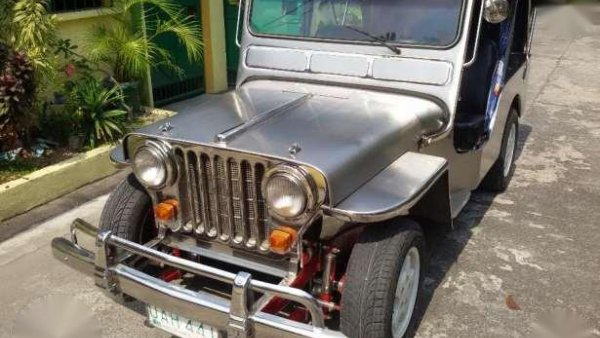
Disadvantages:
- Safety Features: Modern safety features like airbags, ABS, or crumple zones are virtually non-existent. Safety relies heavily on the driver’s skill and the vehicle’s structural integrity.
- Comfort: The ride can be stiff and noisy, especially on long journeys. Interiors are basic, with minimal creature comforts.
- Fuel Efficiency: While diesel engines are generally efficient, older, often non-turbocharged units might not offer the best mileage compared to modern vehicles.
- Emissions: Older diesel engines may produce more emissions, potentially posing challenges for compliance with future environmental regulations.
- Legal/Registration Complexities: Due to their custom nature, ensuring all documentation is in order (especially matching engine and chassis numbers with registration) is crucial to avoid issues with the Land Transportation Office (LTO).
- Resale Value: While some well-maintained or uniquely customized units can hold value, the market for owner type jeeps can be subjective and depends heavily on condition and documentation.
Navigating the Market: Where and How to Find Them
Finding an FPJ Owner Type Jeep requires a bit of local savvy and persistence. They aren’t typically found in major car dealerships.
- Online Marketplaces:
- OLX Philippines (Carousell): A popular platform for used vehicles. Use keywords like "owner type jeep," "FPJ jeep," "diesel jeep," or specific engine types (e.g., "Isuzu jeep").
- Facebook Marketplace & Groups: Facebook groups dedicated to jeeps, classic cars, or even specific engine types (e.g., "Isuzu 4BC1 Owners Philippines") are excellent resources. Many sellers post directly here.
- Local Classifieds & Word-of-Mouth: Check local newspapers or bulletin boards. More often, a mechanic, a local jeepney driver, or someone in the community might know of a jeep for sale.
- Specialized Jeep Builders/Restorers: While less common for the standard "owner type" that’s simply for sale, some shops specialize in building or restoring these jeeps. They might have units available or can build one to order.
- Used Vehicle Lots: Occasionally, smaller used car lots, particularly outside of major cities, might have an owner type jeep among their inventory.
Tips for Searching:
- Be patient. The right jeep might not appear immediately.
- Be specific with your search terms, but also broad enough to catch various listings.
- Connect with local mechanics or jeep enthusiasts; they often have the inside track on available units.
- Be prepared to travel to inspect a promising lead, as sellers might be located in different provinces.
Key Considerations Before Purchase: A Buyer’s Guide
This is arguably the most critical section. Buying an owner type jeep requires a thorough inspection due to their custom nature and age.
1. Documentation is Paramount:
- Original OR/CR (Official Receipt/Certificate of Registration): This is non-negotiable. Ensure it’s the original document, not a photocopy.
- Matching Numbers: Crucially, verify that the engine number and chassis number stamped on the vehicle precisely match the details on the OR/CR. Discrepancies can lead to serious legal issues during registration renewal or transfer of ownership.
- Deed of Sale: Ensure a clear and properly notarized Deed of Sale is prepared, detailing the transaction and identifying both seller and buyer.
- LTO Verification: If possible, have the vehicle’s details verified at the Land Transportation Office (LTO) to check for any encumbrances, alarms, or issues.
- Emission Test Certificate: Required for registration. Check if the current registration is up-to-date.
2. Thorough Physical Inspection:
- Engine:
- Check for leaks (oil, fuel, coolant).
- Start the engine cold: listen for unusual noises (knocks, rattles).
- Check exhaust smoke: Black smoke often indicates unburnt fuel, white smoke suggests coolant, blue smoke indicates burning oil. A little black smoke on hard acceleration might be normal for older diesels, but excessive smoke is a red flag.
- Check oil dipstick for sludge or milky appearance (could indicate coolant in oil).
- Look for signs of overheating (discolored coolant reservoir, warped engine parts).
- Chassis and Frame: This is the backbone. Inspect for:
- Rust: Surface rust is common, but deep, penetrating rust that compromises structural integrity is a major concern. Pay attention to areas around welds, suspension mounting points, and crossmembers.
- Cracks or Bends: Especially critical around suspension mounts, steering box, and engine mounts.
- Poor Welds: Irregular or amateurish welds can indicate structural weakness.
- Suspension:
- Check leaf springs for cracks, sagging, or missing leaves.
- Inspect shock absorbers for leaks.
- Look at shackles and bushings for excessive wear or play.
- Brakes:
- Test brake pedal feel (should be firm, not spongy).
- Check brake lines for leaks or corrosion.
- During test drive, ensure even braking without pulling to one side.
- Steering:
- Check for excessive play in the steering wheel.
- Listen for groaning noises when turning.
- Inspect steering linkage components for wear.
- Electrical System: Often a weak point in older custom builds.
- Test all lights (headlights, tail lights, signal lights, brake lights).
- Check gauges, horn, wipers, and any installed accessories.
- Look for frayed wires, exposed connections, or amateur wiring jobs.
- Tires: Check tread depth and overall condition. Uneven wear can indicate alignment issues or suspension problems.
- Body Condition:
- Inspect for severe rust on the body panels, floorboards, and firewall.
- Check for accident damage or poor bodywork.
- Ensure doors open and close properly.
- Interior: While basic, check the seats, dashboard, and general cleanliness.
3. The Test Drive:
- Crucial. Drive it on various road conditions if possible (smooth, rough, uphill).
- Listen for unusual noises (clunks, squeaks, grinding).
- Assess engine power and acceleration.
- Test the transmission: smooth shifting, no slipping.
- Check braking performance.
- Observe steering responsiveness and alignment.
4. Get Professional Help:
- If you’re not mechanically inclined, bring a trusted mechanic with you for the inspection. Their expertise can save you from costly repairs down the line.
Owning and Maintaining Your FPJ Owner Type Jeep
Congratulations, you’ve acquired your FPJ Owner Type Jeep! Ownership is a rewarding experience, but regular maintenance is key to keeping your rugged companion reliable.
- Regular Maintenance Schedule: Adhere to basic maintenance:
- Oil and filter changes (diesel engines typically every 5,000-10,000 km, depending on oil type and usage).
- Fuel filter replacement.
- Air filter inspection/replacement.
- Checking all fluid levels (coolant, brake fluid, transmission fluid, differential oil).
- Greasing suspension points.
- Addressing Common Issues: Be prepared for minor quirks. Rust prevention is ongoing, electrical issues might crop up, and suspension components will eventually wear.
- Finding Reliable Mechanics and Parts: Build a relationship with a local mechanic who specializes in diesel engines or has experience with owner type jeeps. Most parts for common Japanese surplus engines are readily available at auto supply stores or specialized shops.
- Customization and Upgrades: This is where the fun begins! Many owners upgrade lighting, add sound systems, improve seating, or even modify engines for more power. Ensure any modifications comply with LTO regulations.
- Legal Compliance: Always ensure your registration is current, and that your vehicle passes emission tests. Any major modifications (like engine swaps) must be properly recorded with the LTO.
Price Guide and Sample Table
The price of an FPJ Owner Type Jeep varies significantly based on its condition, engine type, features, and the completeness of its documentation. Here’s a general guide and a sample price table:
Factors Affecting Price:
- Overall Condition: The biggest factor. A well-maintained, freshly painted, and fully functional jeep will command a higher price than one needing extensive repairs.
- Engine Type & Condition: Common, reliable engines in good running order add value. Rebuilt engines or those with known issues will affect the price.
- Features: Basic units are cheaper. Add-ons like a canopy, mag wheels, power steering, functional gauges, or a good sound system can increase the price.
- Documentation: Complete and clear OR/CR with matching numbers is crucial and adds value. Units with problematic papers will be significantly cheaper or impossible to register.
- Location: Prices can vary slightly by region.
| Condition Category | Engine Type (Common Examples) | Key Features | Estimated Price Range (PHP) | Notes |
|---|---|---|---|---|
| Project/Poor | Any (Non-running/Problematic) | Minimal/Damaged Body | PHP 40,000 – 80,000 | Needs extensive repairs, engine overhaul, body work, electrical rework. Best for enthusiasts with deep pockets and skills. |
| Fair/Running | Isuzu C240, Mitsubishi 4DR5 | Basic, functional but worn | PHP 80,000 – 150,000 | Runs, drives, but likely needs significant cosmetic attention, minor mechanical fixes, and electrical troubleshooting. Daily driver potential with work. |
| Good/Daily Driver | Isuzu 4BC1/4BD1, Toyota 2C/3C | Functional lights, basic canopy, decent paint, maybe mag wheels | PHP 150,000 – 250,000 | Reliable daily driver. May have minor issues but generally well-maintained. Clean papers. |
| Excellent/Restored | Any (Freshly Overhauled) | New paint, improved interior, power steering, sound system, unique custom parts | PHP 250,000 – 400,000+ | Show-quality or meticulously restored. All systems working perfectly. Often with upgrades. Clean papers. |
Note: These are estimates and actual prices can vary. Always inspect the vehicle thoroughly.
Conclusion
The FPJ Owner Type Jeep is more than just a vehicle for sale in the Philippines; it’s a testament to Filipino resilience, resourcefulness, and a enduring love affair with a machine that embodies freedom and adventure. Owning one is an experience that connects you to a unique cultural heritage. While it demands a careful approach to purchase and diligent maintenance, the rewards—affordability, rugged reliability, and the sheer character of these iconic vehicles—are immeasurable. If you’re seeking a vehicle that blends practicality with a distinct personality, and carries a piece of the Philippine spirit, an FPJ Owner Type Jeep might just be your perfect match.
Frequently Asked Questions (FAQ)
Q1: Is "FPJ Owner Type Jeep" a specific brand or model?
A1: No, it is not a specific brand. "Owner Type Jeep" refers to custom-built jeeps in the Philippines, often using surplus parts and local fabrication. The "FPJ" part is a cultural reference to Fernando Poe Jr.’s iconic association with rugged jeeps in his movies, signifying a certain style or aesthetic rather than a manufacturer.
Q2: Are owner type jeeps difficult to register with the LTO?
A2: They can be, but primarily if the documentation (OR/CR) is incomplete, fraudulent, or if the engine/chassis numbers do not match the papers. It is crucial to verify all documents and matching numbers before purchase. If everything is in order, the registration process is standard.
Q3: Are parts for owner type jeeps readily available in the Philippines?
A3: Yes, generally. Since most owner type jeeps use common surplus Japanese diesel engines (e.g., Isuzu, Mitsubishi, Toyota), parts for these engines are widely available and affordable in local auto supply stores. Body and chassis parts might require custom fabrication, but local mechanics are adept at this.
Q4: Are owner type jeeps fuel-efficient?
A4: Generally, they are not known for exceptional fuel efficiency compared to modern, fuel-injected vehicles. While they run on more affordable diesel, the older, often non-turbocharged engines, heavier bodies, and simple transmissions mean mileage is usually modest. Efficiency varies greatly depending on the specific engine and how well it’s maintained.
Q5: Can owner type jeeps be used for long drives or inter-island travel?
A5: Yes, many owner type jeeps are used for long drives, especially in the provinces. However, comfort can be an issue due to their basic suspension and interiors. If well-maintained, with a healthy engine and good brakes, they are certainly capable of long-distance travel, though perhaps at a more leisurely pace.
Q6: What is the typical lifespan of an owner type jeep?
A6: With proper maintenance and occasional overhauls, an owner type jeep can last for decades. Their simple, robust construction makes them highly durable and repairable. Many jeeps from the 1960s, 70s, and 80s are still in active use today.
Q7: How safe are owner type jeeps compared to modern vehicles?
A7: Owner type jeeps lack modern safety features like airbags, ABS, stability control, or crumple zones. Their safety relies on their rugged frame and the driver’s caution. While their robust construction offers some protection in minor impacts, they offer less occupant protection than contemporary vehicles in serious collisions. Drive defensively and ensure all essential components (brakes, steering, lights) are in excellent condition.
